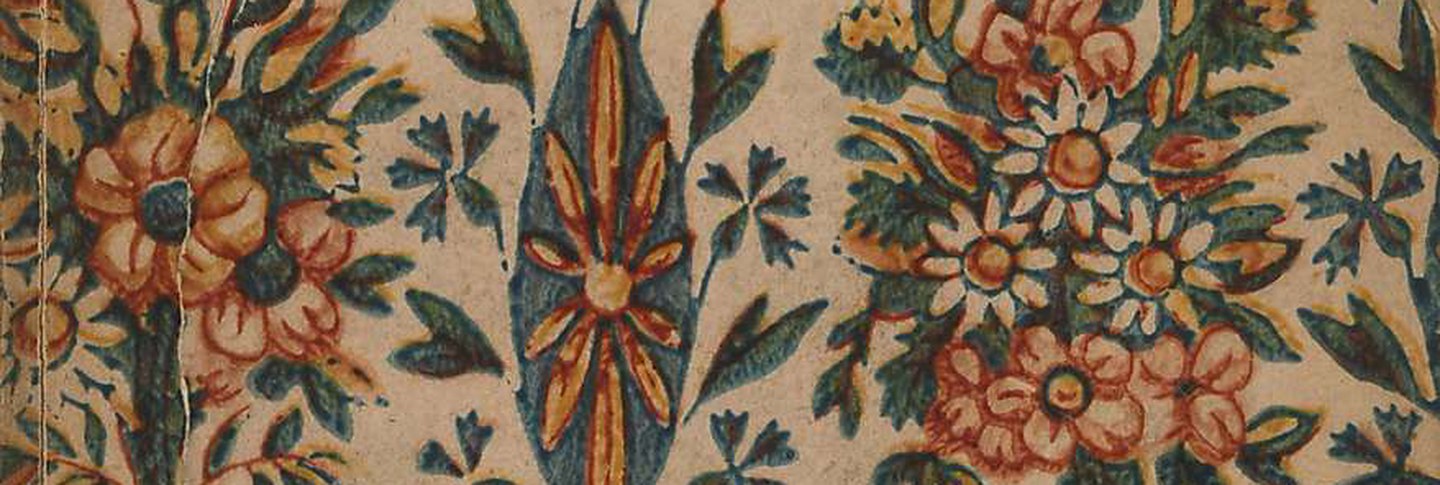There is evidence of paper bindings from as early as the fifteenth century, when some printed books were wrapped in paper labeled with woodcuts. In later centuries, paper bindings became more common: they could be printed quickly, provided basic protection to a book’s text, and were an inexpensive alternative to leather or parchment bindings.
Paper bindings are sometimes described as “temporary.” In this capacity, they can shed light on bookselling and purchasing. Books in their “original boards” (such as Lord Byron’s English Bards, and Scotch Reviewers) may look plain and rather weary, but they also look much as they would have in a nineteenth-century bookshop. A paper binding that lists the price of the book, or advertises its contents, is a valuable artifact indeed, especially because these bindings were often removed and replaced with leather once the book was purchased.
Some paper bindings were never intended to be removed. Those made of decorated papers were intended for long-term use, and had the added benefits of being both attractive and affordable. Common forms of decorated paper include marbled paper, which typically has a veined or mottled pattern, and paste paper, on which patterns have been impressed into colored paste.
By the eighteenth century, paper bindings were common throughout Europe and America. In the early nineteenth century, publishers developed cost-efficient methods of binding with cloth-covered case bindings. Despite their prevalence in the nineteenth century, cloth bindings did not displace paper bindings altogether; many paperbacks were published in the nineteenth century. Today, of course, paper is once again the default binding material for general literature.












